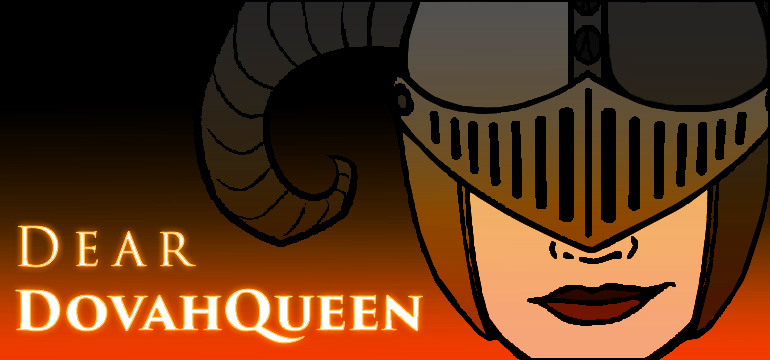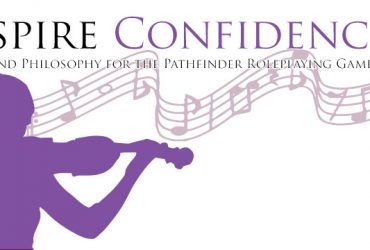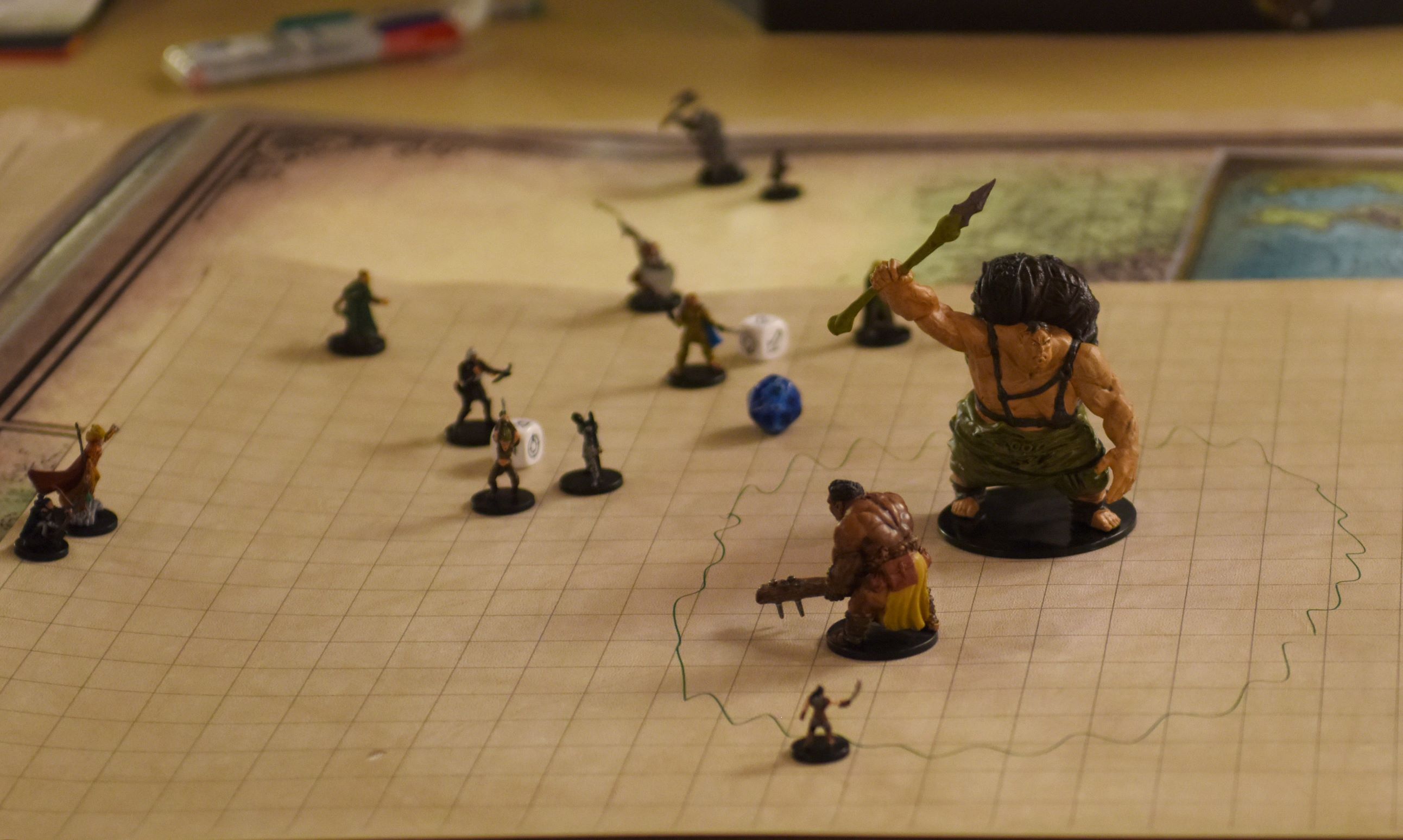People have been afraid of ghosts and spirits for as long as we’ve had the words to talk about them. Haunts make for a great challenge to would-be heroes, but their rules can be quite cumbersome. Today, we’re going to break down haunts and go over some effective ways to implement them in your game.
Dear DovahQueen: What is the best way to run a haunt? I’ve tried reading the proper way to run a haunt but sadly need specific instructions because I still don’t get it. Does the party get a perception check to notice before setting off? Channel Energy or any skill check help avoid? If set off, is it only way to escape it to run or run the encounter? Will it always reset until its finally put to rest? I believe i ran a haunt incorrectly and it bugged me so I want to know what’s the step by step instruction? Thanks. —Ghostbusted
Dear Bustghoster: I think that haunts are a neat and fun mechanic that can be really refreshing. They’re a great way to challenge your players in a way that they might not be used to, and often with a compelling narrative. Unfortunately, as you’ve noticed, they can be pretty technical in the rules department and therefore a little unwieldly. Let me first assure you though that however you ran it was not “incorrect”. It may have not be exactly the way the rules intended, but the reason we play these games isn’t to follow rules precisely to the letter. If your players and you had fun that evening, then you ran that haunt successfully. We can break them down a little more though so future haunts can be ran with a little more confidence.
I think that the best way to begin wrapping our heads around haunts are as a more “involved” trap. For example, any trap has some mechanism which triggers it, and then it does some thing after that. For each a haunt, it will tell you how it gets triggered on the stat block under “Trigger.” Most haunts will be triggered by “proximity”, so the players will have primed them to go off just by stepping in the room.
Whereas an axe trap can be easily discovered with a normal ole Perception check before the trip wire is caught, discovering the haunt before a spectral horseman is swinging at your head is a bit more difficult. In the RAW (rules as written), players will only get a chance to detect the haunt before setting it off if they’ve cast detect undead or an appropriate detect alignment spell. This will allow them to attempt the haunt’s “Notice” check at -4 to get a hint at what’s on the other side of that creaky old door before they turn the knob. As the GM, you could deem another spell appropriate enough to the particular haunt to warrant a preemptive check as well (like detect psychic significance for a more psionic spirit). If they aren’t under the effects of the appropriate spell, all of the characters get to make the Notice check after they’ve triggered it. This way, those who succeed get to see what lovely fate has befallen them only slightly before it happens and can react in the coming surprise round (more on that in a minute).
The area the haunt affects is normally listed next to its alignment. If it is a proximity haunt (they normally are), once they step foot in the area the haunt is considered “triggered” and ready to go. Since most traps trigger immediately, you could certainly argue that a haunt should do the same, but as a GM I like to let my vict…*cough cough*…players wander a little further in before I actually manifest the effects. Because the way the rules are written, the haunt only affects the area listed and won’t target things outside of said area. If you give your players a little bit of extra time to wander into the middle of the room, they won’t be as easily able to just back up and avoid the poltergeist after they’ve already stepped foot in its library.
Once it’s triggered and going, the haunt’s hit points can now be affected, a surprise round starts, and the players can make the haunt’s “Notice” check. Those who make the check can roll initiative and act in the surprise round, and the haunt will produce its effects on initiative 10. Most haunts can only be neutralized by reducing its hit points to zero, and most of those hit points can only be harmed by positive energy effects such as channel energy, cure light wounds, etc. Unless it’s a persistent haunt, as noted next to its alignment, it won’t carry into any further rounds and will be “over” as soon as that surprise round is done. On the other hand, a persistent haunt is going to continue to manifest its effects each round on initiative 10 until its hit points are reduced to zero or until it has no targets. A haunt reduced to zero is consider neutralized, but not destroyed. It will lie dormant for a period of time listed as “Reset” and then be ready to activate once again. If the heroes perform the listed “Destruction” action, then the haunt will be forever defeated, removed from the area, and songs will be sung at the local tavern. Characters that survive an experience with a haunt are awarded the listed XP.
For an example of it all put together:
“You reach an old manor with rotted siding and a roof that’s falling in. Wisps of what used to be curtains hang in the pane-less windows.”
*players walk up to the door*
*the cleric decides to cast detect undead*
“Ok, you cast the spell. Make a Perception check at a -4”
*they get a 16. let’s just say that that’s good enough to succeed, but just barely*
“You’re not quite sure, but you think you hear the faint sound of a baby crying and someone violent ‘shushing’ it coming from inside.”
*cleric tells the party about it, the party decides to go inside, and opens the door*
*once they step foot in the foyer, you could consider the haunt triggered here, but let’s say we decide to let them get a bit further inside*
*players start exploring the house; some are looking for a baby*
“Ok, everyone make a Perception check”
*the fighter and the cleric make it*
“Everyone can hear an earsplitting cackle, but the fighter and cleric can tell that it’s coming from above. You both look up and see a white woman wearing rags clinging from the ceiling with her head turned 180 degrees to look on you menacingly. In the blink of an eye, she begins falling with horrible claws aimed at your face. You two can act in the surprise round; roll initiative.”
*fighter gets a 12, clerics gets an 8, haunts go on 10, and no other party member can participate in this surprise round*
*fighter swings at the ghost, you can allow them to roll attack if you want, but unless they’re dealing positive energy it’s not gonna have any effect*
*haunt’s turn; this haunt’s effect makes an attack roll on all characters for 1d4 points of slashing damage each round until defeated. it does the thing. some folks take some damage.*
*cleric goes, channels positive energy, and deals enough positive energy damage to reduce the haunt’s hit points to zero.*
*the haunt is considered ‘neutralized’, but it will be ready to trigger again in 24 hours. if the players know to do so, they can bury the bones of the baby and burn the bones of the woman to destroy the haunt forever*
Again, I’m quite confident that you did well last time you ran your haunt, and that your players had fun. If you plan to run one again, just remember to think about it like a more involved trap. I hope this helped you understand how they work!
P.S. And don’t forget to make spoopy ghost noises throughout the whole ordeal!
You can request RPG advice or send your questions by email to deardovahqueen@gmail.com or on Facebook.







Great question. Great answer. 🙂
Thank you so much!
I am DMing Carrion Crown and my party is about to head into Harrowstone, so this article was well timed! Thanks!